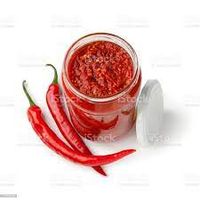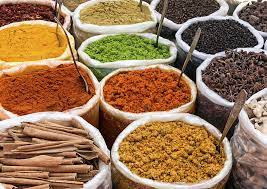What is Indonesian food?
Indonesian restaurants you don’t see a lot in Sweden. Although there are a lot of Indonesians living outside Indonesia, they don’t open a lot of restaurants like the Chinese people do. However when you find one you should try it for sure!
The food culture of Indonesia is shaped by several factors. It is a collection of various regional culinary traditions that formed the geographic situation of Indonesia. There are a so many recipes and even more variations in it partly because Indonesia is composed of approximately 6,000 islands with more than 1,300 ethnic groups. Many regional cuisines exist, often based upon indigenous culture with some foreign influences.
No meal without rice
Steamed rice is the main dish in the Indonesian diet. It holds the central place in Indonesian culture. When you drive around you see the rice fields, you can buy it at markets, and it’s served by most of the meals, even breakfast. Rice is most often eaten as plain rice with just a few protein and vegetable dishes as side dishes. However, it is also for example served as nasi goreng (fried rice), nasi uduk (rice cooked in coconut milk), nasi kuning (rice cooked with coconut milk and turmeric), lontong (rice steamed in banana leaves). Nasi goreng is famous in Indonesia and considered as a national dish.
Chinese influences
Indonesian food carries a lot of influence in its own, however Chinese immigrants contributed a great deal in making Indonesian cuisine what it is today. When more and more Chinese immigrants settled in Indonesia their way of cooking and recipes integrated with the local culture. The famous Nasi Goreng was adopted from a Chinese tradition of frying leftover rice in the morning. A lot of Chinese-origin dishes in Indonesia have been assimilated so deeply that many people don’t even realise their roots.
Sambal is hot in Indonesia!
As the French drink their wine, the Indonesian people eat their food with sambal.
There are dozens of sambal (spicy condiment) recipes known in Indonesia. Like the French drink their meals with the right wine, people in Indonesia use the meals with a certain sambal to make it complete. Sambal is a sauce made of chilis, this sauce is used to complement or enhance the flavor of their food. Indonesians can be content with really simple food as long as there is sambal to accompany it. There are many varieties, such as sambal badjak, manis, oelek, tomat etc.
Indonesians love their spices
Indonesia’s food has a lot of influences: Arab and Indian traders brought spices and dishes like martabak (stuffed pancakes). The Spanish introduced chili. The famous Dutch rice-table is the larger-than-life Dutch interpretation of the traditional Indonesian meal of rice plus several dishes. But the Chinese immigrants likely had the biggest impact, bringing noodles, soy sauce, and soybeans to the country.
Indonesia is home to the Moluccas archipelago, known as the fabled ‘Spice Islands’ explored by 16th century European nations, in this way contributing to the world cuisine. “Rempah" is the Indonesian word for spice, while "boemboe" is the Indonesian word for a spice mixture or seasoning, and it commonly appears in the names of certain spice mixtures, sauces and seasoning pastes.
Spices such as nutmeg or mace, clove, pandan leaves, and galangal are originally from Indonesia. It is likely that black pepper, turmeric, lemongrass, shallot, cinnamon, candlenut, coriander and tamarind were introduced from India, while ginger, scallions and garlic were introduced from China. Those spices from mainland Asia were introduced early, in ancient times, thus they became integral ingredients in Indonesian cuisine.
The country is credited with introducing the world to a tapestry of new flavours and sensations. Indonesia remains one of the world’s top producers of spices, giving us nutmeg, clove, galangal, pandan leaves, and others which are incorporated into many traditional recipes. An authentic traditional recipe may list almost a dozen herb and spice ingredients to make one dish, resulting in a remarkable and distinctive taste loved by many.Hier kunt u content plaatsen.

